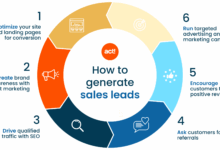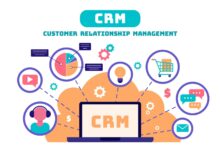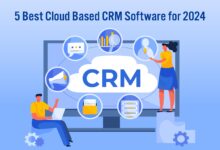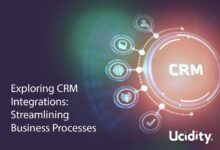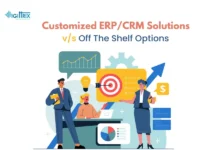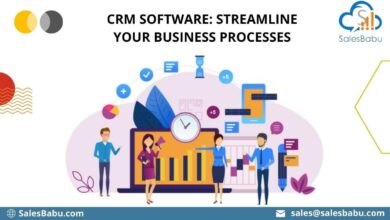CRM Software Pricing Comparison: Find The Best Plan For Your Business
CRM Software Pricing Comparison: With CRM Software Pricing Comparison at the forefront, this paragraph opens a window to an amazing start and intrigue, inviting readers to embark on a storytelling filled with unexpected twists and insights. Understanding the various pricing models, factors affecting pricing, types of pricing plans, hidden costs, negotiating strategies, value-based pricing, comparison tools, scalability impact, industry-specific variations, free vs. paid options, case studies, and more.
Explore the world of CRM software pricing and make informed decisions for your business.
Understanding CRM Software Pricing Models
CRM software pricing models can vary depending on the provider, features offered, and target market. It is essential to understand the different pricing structures to make an informed decision when choosing a CRM solution for your business.
Subscription-Based Pricing vs. One-Time Purchase Pricing
Subscription-based pricing involves paying a recurring fee at regular intervals, such as monthly or annually, to access the CRM software and its updates. On the other hand, one-time purchase pricing requires a flat fee upfront for a perpetual license to use the software without additional charges for updates.
- Subscription-Based Pricing:
- Advantages:
- Lower initial cost
- Access to the latest updates and features
- Scalability based on business needs
- Disadvantages:
- Higher total cost over time
- Dependency on continuous payments
- Risk of price increases
- Advantages:
- One-Time Purchase Pricing:
- Advantages:
- No ongoing payments
- Potentially lower long-term costs
- Full ownership of the software
- Disadvantages:
- Limited access to updates and support
- Potential compatibility issues with future software
- Higher upfront cost
- Advantages:
Factors Influencing CRM Software Pricing
Several factors can influence the pricing of CRM software, including:
- Features and Functionality: The more advanced features a CRM software offers, the higher the price is likely to be.
- Number of Users: Pricing often scales based on the number of users who will be using the software.
- Customization Options: Customizable CRM solutions may come at a higher price point to accommodate specific business needs.
- Integration Capabilities: CRM software that integrates with other tools and platforms may have higher pricing due to enhanced functionality.
- Industry Focus: Some CRM solutions cater to specific industries, and pricing may vary based on the target market.
Factors Affecting CRM Software Pricing
When it comes to CRM software pricing, there are several key factors that influence the cost of implementation. Understanding these factors is crucial for businesses looking to invest in the right CRM solution for their needs.
The number of users is one of the primary factors that impact CRM software pricing. Most CRM vendors offer tiered pricing based on the number of users who will be accessing the system. Generally, the more users you have, the higher the cost will be. It’s important for businesses to accurately estimate the number of users who will need access to the CRM system to ensure they choose a plan that fits their budget.
Another key factor that determines CRM software pricing is the features and functionality included in the system. CRM software comes with a wide range of features, from basic contact management to advanced analytics and automation tools. The more robust the features and functionality, the higher the cost of the software. Businesses should carefully assess their needs and prioritize the features that are essential for their operations to avoid overpaying for unnecessary functionalities.
Types of CRM Software Pricing Plans
When it comes to CRM software pricing, there are various plans offered by different providers to cater to the diverse needs of businesses. Understanding the different pricing structures can help you choose the right plan for your organization.
1. Per User Pricing
Per user pricing is a common pricing model where the cost is based on the number of users who will be using the CRM software. Each user is assigned a specific license, and the price increases with the addition of more users. This plan is suitable for businesses with a fixed number of users and provides a clear understanding of costs.
2. Tiered Pricing
Tiered pricing involves different pricing levels or tiers based on the features and functionalities offered. Businesses can choose a tier that aligns with their requirements and budget. This model allows for scalability and flexibility as organizations can upgrade to a higher tier as their needs grow.
3. Usage-based Pricing
Usage-based pricing is determined by the usage or consumption of certain features or resources within the CRM software. This pay-as-you-go model is beneficial for businesses with fluctuating usage patterns or seasonal demands. However, it’s essential to monitor usage to avoid unexpected costs.
4. Flat-rate Pricing
Flat-rate pricing offers a fixed price for the CRM software, regardless of the number of users or features used. This straightforward pricing model simplifies budgeting and cost management for businesses. However, it may lack the flexibility to accommodate growth or changes in requirements.
5. Freemium Model
The freemium model provides basic CRM functionality for free, with the option to upgrade to a paid plan for advanced features and capabilities. This model allows businesses to try out the software before committing to a paid plan. While it offers cost-effective entry-level options, businesses may miss out on essential features in the free version.
Each pricing plan has its own set of advantages and disadvantages, and choosing the right one depends on your organization’s size, budget, and specific needs. By comparing the pricing structures of popular CRM software vendors, you can make an informed decision that aligns with your business objectives.
Hidden Costs in CRM Software Pricing
When considering CRM software pricing, it’s crucial to be aware of the hidden costs that may not be immediately obvious. These additional expenses can impact the overall cost of implementing a CRM solution and should not be overlooked during the comparison process.
Common Hidden Costs Associated with CRM Software Pricing
- Implementation and customization fees that go beyond the initial purchase price.
- Training costs for employees to learn how to use the CRM software effectively.
- Integration costs with other systems or applications within your organization.
- Additional user licenses or fees for scaling up as your business grows.
How Add-Ons and Integrations Affect the Overall Cost
Add-ons and integrations can significantly impact the total cost of CRM software. Each additional feature or integration may come with its own price tag, increasing the overall investment required.
It’s essential to carefully evaluate the necessity of each add-on or integration to determine if the benefits outweigh the extra cost.
The Importance of Considering Hidden Costs
- Ignoring hidden costs can lead to budget overruns and unexpected expenses down the line.
- Understanding the full cost of ownership allows for better budget planning and decision-making.
- Comparing CRM software pricing should involve a thorough analysis of both visible and hidden costs to make an informed choice.
Pricing Transparency in CRM Software
In the realm of CRM software, pricing transparency plays a crucial role in helping customers make informed decisions and build trust with providers. Let’s delve into the significance of transparent pricing and how it impacts businesses.
Level of Pricing Transparency Among CRM Software Providers
When comparing different CRM software providers, the level of pricing transparency can vary significantly. Some providers offer straightforward pricing structures with no hidden fees, while others may have complex pricing models that include additional costs for essential features. It is essential for customers to carefully review and compare these pricing structures to avoid surprises and ensure they are getting value for their investment.
Importance of Transparent Pricing for Customers
Transparent pricing is essential for customers as it helps in building trust with the software provider. When customers have a clear understanding of the costs involved, they can make informed decisions based on their budget planning and ROI calculations. Additionally, transparent pricing enables customers to establish a long-term relationship with the software provider, knowing that there will be no unexpected costs down the line.
Impact of Pricing Transparency on Business Decision-Making
For businesses, pricing transparency is critical for effective decision-making. It allows them to budget accurately, calculate their ROI, and assess the long-term costs associated with using a CRM software. By having transparent pricing, businesses can avoid financial surprises and ensure that they are investing in a solution that aligns with their needs and goals.
Customization and Pricing in CRM Software
Customization plays a crucial role in the pricing of CRM software. Businesses often have unique needs and requirements that may not be fully met by off-the-shelf CRM solutions. As a result, customization options are offered by CRM vendors to tailor the software to specific business processes and workflows.
Impact of Customization on Pricing
Customization can significantly impact the pricing of CRM software. The more extensive and complex the customization requirements, the higher the cost of implementation and maintenance. Customization involves additional development work, testing, and support, all of which contribute to the overall pricing of the CRM software.
- Custom Fields and Modules: Adding custom fields, modules, or functionalities to the CRM system can increase the pricing, as it requires development work to integrate these customizations.
- Integration with Third-Party Applications: Customizing the CRM software to integrate with other third-party applications or systems may incur additional costs, depending on the complexity of the integration.
- User Interface Customization: Tailoring the user interface of the CRM software to match the branding or specific user preferences can impact pricing due to design and development efforts.
It is essential for businesses to strike a balance between the level of customization needed and the cost-effectiveness of implementing those customizations.
Examples of Customization Impact on CRM Software Pricing
Customization can vary in complexity and scope, leading to different pricing models based on the following examples:
| Customization Example | Impact on Pricing |
|---|---|
| Adding custom workflows and automation | Increased pricing due to development and testing efforts. |
| Integrating CRM with proprietary software | Additional costs for customization and ongoing support. |
| Customizing dashboards and reports | Higher pricing for design and implementation of tailored analytics. |
Negotiating CRM Software Pricing
Negotiating the pricing of CRM software can be a crucial step in getting the best value for your investment. By employing effective strategies, you can maximize discounts and incentives from vendors while ensuring that you get the features you need at a price that fits your budget.
Effective Negotiation Strategies
- Do your research: Understand the market prices for CRM software and the typical discounts offered by vendors.
- Highlight your needs: Clearly communicate your requirements and priorities to vendors to negotiate a tailored pricing plan.
- Bundle services: Consider bundling services or products to leverage discounts and get a better overall deal.
- Ask for discounts: Don’t be afraid to ask for discounts or additional incentives, especially if you are a long-term customer.
Analyzing Pricing Proposals
- Compare features: Evaluate the features offered by different vendors and how they align with your business needs.
- Consider total cost of ownership: Look beyond the initial price to the long-term costs associated with the CRM software.
- Negotiate terms: Discuss payment terms, contract length, and any potential add-on costs before finalizing the deal.
Creating a Negotiation Plan
- Set objectives: Define your goals and priorities for the negotiation process to ensure you stay on track.
- Establish budget constraints: Determine your budget limits and be prepared to walk away if the pricing doesn’t align with your financial goals.
- Identify desired features: Prioritize the features that are essential for your business operations and be prepared to negotiate based on these needs.
Leveraging Vendor Relationships
- Build trust: Cultivate positive relationships with vendors over time to increase your negotiating leverage and secure favorable pricing terms.
- Seek loyalty discounts: Explore loyalty programs or discounts for long-term customers to maximize savings on CRM software purchases.
- Communicate openly: Be transparent about your needs and expectations to foster a collaborative negotiation process with vendors.
Value-Based Pricing in CRM Software
Value-based pricing in CRM software refers to a pricing strategy that determines the cost of the software based on the perceived value it provides to the customer. Instead of focusing solely on production costs and profit margins, value-based pricing takes into account the benefits and advantages that the software offers to the users.
Differences between Value-Based Pricing and Traditional Pricing Models
- Traditional pricing models are based on production costs and profit margins, while value-based pricing considers the value perceived by customers.
- Value-based pricing is more flexible and can adapt to changing market conditions and customer needs, unlike traditional pricing models.
- Traditional pricing models may lead to underpricing or overpricing, whereas value-based pricing aims to capture the true value of the software for the customer.
Examples of CRM Software Companies Using Value-Based Pricing
- HubSpot is a prime example of a CRM software company that uses value-based pricing. They offer different pricing tiers based on the features and value each tier provides to customers.
- Salesforce also implements value-based pricing by offering a variety of pricing plans tailored to different customer needs and business sizes.
Advantages and Disadvantages of Value-Based Pricing
| Advantages | Disadvantages |
|---|---|
| Reflects the true value of the software for customers. | Can be complex to implement and adjust. |
| Allows for higher profitability if customers perceive high value. | Customers may not always accurately assess the value of the software. |
Implementing value-based pricing helped Zoho CRM increase its revenue by 30% in one year by aligning pricing with the value customers received from the software.
Pricing Comparison Tools for CRM Software
When it comes to selecting the right CRM software for your business, comparing pricing is a crucial step to ensure you are getting the best value for your investment. Luckily, there are several tools and resources available to help you compare CRM software pricing effectively.
Popular Pricing Comparison Tools
- 1. Capterra: Capterra is a popular software directory that allows you to compare different CRM software options based on pricing, features, and user reviews.
- 2. G2: G2 is another platform where you can find detailed pricing information and user ratings for various CRM software solutions.
- 3. Software Advice: Software Advice provides personalized recommendations and pricing comparisons for CRM software based on your specific business needs.
Tips for Effective Use of Pricing Comparison Tools
- 1. Define Your Requirements: Before using pricing comparison tools, make sure you have a clear understanding of your business requirements and the features you need in a CRM software.
- 2. Compare Apples to Apples: Ensure that you are comparing similar CRM software options in terms of features, scalability, and user support to make an accurate comparison.
- 3. Look Beyond Pricing: While pricing is important, consider factors like customer support, integration capabilities, and scalability when making a decision.
- 4. Utilize Free Trials: Take advantage of free trials offered by CRM software providers to test the platform before committing to a purchase.
- 5. Read User Reviews: User reviews can provide valuable insights into the user experience and satisfaction levels with a particular CRM software.
Scalability and Pricing in CRM Software
When it comes to CRM software, scalability plays a crucial role in determining the pricing structure. Scalability refers to the ability of the software to accommodate growth and increased usage over time. It is essential for businesses to consider scalability when evaluating CRM software pricing to ensure that the solution can grow along with the business.
Importance of Scalability in CRM Software Pricing
- Scalability allows businesses to expand their operations without the need to switch to a new CRM system, saving time and resources.
- By choosing a scalable CRM solution, businesses can future-proof their investment and avoid the need for costly upgrades down the line.
- Considering scalability when evaluating pricing options helps businesses make informed decisions that align with their long-term growth strategies.
Comparison of Pricing Options for Scalable CRM Solutions
- Subscription-based pricing: Businesses pay a recurring fee based on the number of users and features included in the plan, making it easy to scale up or down as needed.
- Enterprise pricing: Tailored for larger organizations with complex needs, offering customization options and scalability to support growth.
- Pay-as-you-go pricing: Ideal for small businesses or startups that want flexibility in scaling their CRM solution based on usage.
Impact of Features on Scalability of CRM Software
- Advanced customization options may increase scalability but also add to the overall cost of the CRM software.
- Integration capabilities with other business systems can enhance scalability by creating a seamless workflow across different departments.
- Scalable storage and data management features are essential for accommodating growing volumes of customer data.
Cost Projection for Different Growth Scenarios
By projecting the cost of CRM software based on different growth scenarios, businesses can estimate their expenses and budget accordingly for scalability.
Evaluation of Contract Types for Scalable CRM Solutions
- Long-term contracts: Offer cost savings and stability for businesses with predictable growth patterns, ensuring consistent pricing over a specified period.
- Pay-as-you-go models: Provide flexibility for businesses with fluctuating growth rates, allowing them to adjust their CRM usage and costs as needed.
Industry-Specific Pricing Variations in CRM Software
In the realm of CRM software pricing, it is crucial to understand how costs can vary significantly across different industries. Factors such as features, scalability, and customization options play a pivotal role in determining the pricing structure for CRM solutions tailored to specific sectors.
Key Factors Contributing to Industry-Specific Pricing Variations
- Features: Industries with unique requirements may necessitate specialized features, leading to higher pricing.
- Scalability: Sectors experiencing rapid growth or fluctuating demands may require scalable solutions, impacting pricing.
- Customization Options: Industries with complex workflows often require extensive customization, influencing pricing accordingly.
Examples of Industry-Specific CRM Software Pricing
| Industry | CRM Software | Pricing Structure |
|---|---|---|
| Retail | CRM-X | Subscription-based model with additional modules for inventory management |
| Healthcare | CRM-Y | Per-user pricing with HIPAA compliance features |
Pricing Strategy Recommendation for a Fictional CRM Software Company
After conducting market research and competitor analysis, it is recommended that our fictional CRM software company focus on targeting the healthcare industry. By offering a CRM solution with robust HIPAA compliance features and flexible per-user pricing, we can cater to the specific needs of healthcare providers while ensuring competitive pricing compared to existing solutions in the market.
Free vs. Paid CRM Software Pricing
When considering CRM software options, one of the key decisions that businesses face is whether to opt for free CRM software or invest in a paid solution. Both options come with their own set of features, limitations, and cost implications that need to be carefully evaluated.
Feature Comparison
- Free CRM Software:
- Limited features and functionalities compared to paid versions.
- Basic contact management and communication tools.
- Often suitable for small businesses with simpler CRM needs.
- Paid CRM Software:
- Comprehensive features such as advanced reporting, analytics, and automation.
- Integration capabilities with other business systems.
- Scalability to accommodate growing business requirements.
Factors to Consider
- Business Size and Needs:
- Small businesses with limited budgets may opt for free CRM software.
- Medium to large enterprises with complex CRM requirements may benefit from paid solutions.
- Long-Term Cost Implications:
- Free CRM software may come with hidden costs such as limited user support or data storage restrictions.
- Paid CRM software offers more robust support, training, and customization options.
- Integration Requirements:
- Paid CRM software often provides seamless integration with other business tools, enhancing overall operational efficiency.
- Free CRM software may lack the integration capabilities needed for a connected business ecosystem.
Case Studies on CRM Software Pricing Strategies
When it comes to CRM software pricing strategies, studying real-world case studies can provide valuable insights into how companies position themselves in the market and attract and retain customers. Let’s explore some successful examples and analyze their impact.
Salesforce: Value-Based Pricing Strategy
- Salesforce, a leading CRM software provider, adopts a value-based pricing model, where customers pay based on the perceived value of the software.
- This strategy has helped Salesforce establish itself as a premium CRM solution, targeting enterprise-level customers who are willing to invest in advanced features and functionalities.
- By aligning pricing with the value delivered to customers, Salesforce has been able to achieve high customer retention rates and sustainable revenue growth.
HubSpot: Freemium Pricing Model
- HubSpot offers a freemium pricing model, providing basic CRM functionalities for free to attract a large user base.
- Customers can then upgrade to paid plans for access to advanced features and additional services, such as marketing automation and sales tools.
- This pricing strategy has allowed HubSpot to rapidly expand its customer base and increase market share in the competitive CRM software industry.
Microsoft Dynamics 365: Tiered Pricing Structure
- Microsoft Dynamics 365 utilizes a tiered pricing structure, offering different packages tailored to the needs of various business sizes and industries.
- Customers can choose from a range of pricing options based on the features and functionalities they require, allowing for scalability and flexibility.
- This approach has enabled Microsoft Dynamics 365 to cater to a diverse customer base and compete effectively in the CRM software market.
Analyzing Social Media Sentiment on New Product Launch
Social media sentiment analysis plays a crucial role in understanding how users perceive a new product launch. By collecting data from various social media platforms, businesses can gain valuable insights into customer opinions and preferences.
Identifying Positive and Negative Sentiments
- Utilize sentiment analysis tools to categorize user comments as positive, negative, or neutral.
- Identify common themes or keywords in user feedback to gauge overall sentiment towards the new product.
- Create a sentiment analysis report highlighting the distribution of positive and negative sentiments expressed by users.
Key Findings and Insights
- Highlight key trends or patterns in user sentiment to understand what aspects of the new product are resonating with customers.
- Identify areas of improvement based on negative feedback to refine marketing strategies and product features.
- Use the insights from the sentiment analysis report to make informed decisions and adjustments to the new product launch campaign.
Final Wrap-Up
From examining pricing transparency to analyzing scalability and industry-specific variations, the CRM Software Pricing Comparison journey has equipped you with the tools needed to navigate the complex landscape of CRM software pricing. Make the right choice for your business and watch it flourish.
